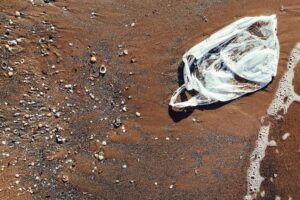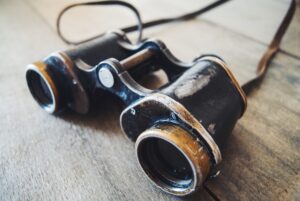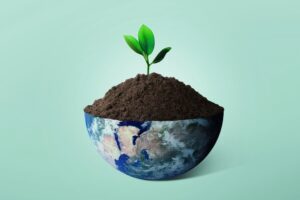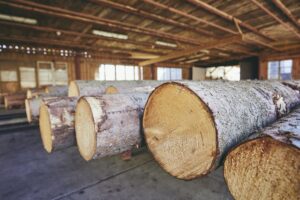As wild fish stocks decline, aquaculture — the farming of fish, shellfish, and seaweed — has been hailed as the future of seafood. The global industry has grown rapidly, now producing over half of all seafood consumed worldwide. Proponents call it a solution to overfishing and a way to feed billions sustainably.
But aquaculture’s story is more complicated. While it can relieve pressure on oceans, it also brings risks: water pollution, disease, reliance on wild fish for feed, and ecosystem damage. Understanding aquaculture means seeing both its potential and its pitfalls.
The Rise of Aquaculture
- In 2020, aquaculture accounted for ~56% of global seafood supply (FAO).
- Asia dominates production, with China producing more than 60% of farmed seafood.
- Species range from salmon, tilapia, and shrimp to oysters, clams, and seaweed.
As demand for seafood rises, aquaculture has become one of the fastest-growing food sectors in the world.
The Promise of Aquaculture
Reducing Pressure on Wild Stocks
- With over 35% of fish stocks overfished, aquaculture offers an alternative to harvesting wild populations.
- Bivalve farming (mussels, oysters, clams) is especially sustainable, requiring no feed while filtering water and improving ecosystems.
Food Security
- Seafood is a critical protein source for over 3 billion people. Aquaculture can provide a steady, scalable supply.
- Seaweed farming provides not only food but also animal feed, fertilizers, and materials.
Climate Potential
- Seaweed farms absorb carbon and reduce ocean acidification locally.
- Some aquaculture systems integrate with renewable energy projects, like offshore wind farms.
The Pitfalls of Aquaculture
Pollution and Waste
- Fish farms concentrate waste, uneaten feed, and chemicals, which flow into waterways and fuel algal blooms.
- Antibiotics and pesticides used to manage disease can harm surrounding ecosystems.
Disease and Parasites
- Crowded farms make outbreaks common.
- Parasites like sea lice spread from salmon farms into wild populations, devastating ecosystems.
Feed Dependency
- Many farmed fish (like salmon and shrimp) are carnivorous. Their feed often comes from wild-caught fish meal and oil.
- This means aquaculture can actually increase pressure on wild stocks if not managed sustainably.
Habitat Destruction
- Mangroves and wetlands are often cleared for shrimp farms, destroying critical carbon sinks and biodiversity hotspots.
Social Impacts
- In some regions, aquaculture operations displace small-scale fishers and local communities.
- Labor abuses, especially in shrimp supply chains, remain a serious issue.
The Numbers
- It can take 2–3 pounds of wild fish to produce 1 pound of farmed salmon.
- Shrimp farming has been linked to the loss of over 35% of the world’s mangroves in the past 50 years.
- Global aquaculture is projected to reach ~109 million tons by 2030, further increasing its footprint.
More Sustainable Models
Integrated Multi-Trophic Aquaculture (IMTA)
- Combines species like fish, shellfish, and seaweed so waste from one becomes food for another.
- Reduces pollution and increases overall productivity.
Land-Based and Recirculating Systems (RAS)
- Fish are raised in closed tanks on land, with water recycled.
- Limits pollution but requires high energy input.
Seaweed and Shellfish Farming
- Require no feed, filter water naturally, and can improve coastal resilience.
- Hold promise as some of the lowest-impact aquaculture systems.
What Needs to Change
- Shift subsidies away from high-impact farming (like shrimp and salmon) toward low-impact species (like mussels, seaweed).
- Invest in alternative feeds made from algae, insects, and food waste.
- Strengthen labor protections and ensure aquaculture benefits local communities.
- Enforce regulations on waste, antibiotic use, and habitat protection.
FAQs
Is farmed fish healthier than wild?
It depends. Farmed fish may have higher fat content, but also risks of antibiotic residues or contaminants. Transparency and standards vary widely.
Is aquaculture better than wild fishing?
Not automatically. Sustainable aquaculture can relieve wild stocks, but unsustainable practices can cause equal or greater harm.
What seafood is most sustainable?
Bivalves (mussels, oysters, clams) and seaweed are among the best. Shrimp and salmon are often the most problematic.
Will aquaculture replace fishing?
Not entirely. Wild fisheries will remain important, but aquaculture is likely to dominate future supply.
Final Thoughts
Aquaculture is neither a silver bullet nor a villain. It is a tool — one that can either support a sustainable food system or deepen ecological and social harm. The difference lies in how it is managed, what species are prioritized, and whether communities and ecosystems are protected.
If aquaculture is to live up to its promise, it must be reimagined through the lens of circular economy thinking: waste reused, pressure on wild ecosystems relieved, and communities placed at the center of decision-making.









Reader Interactions